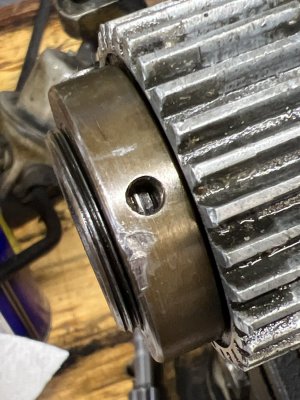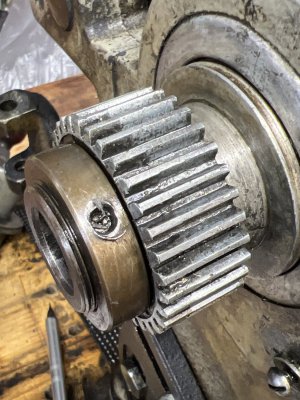- Joined
- Mar 20, 2024
- Messages
- 64
Anyone know what the thread size is on the left side of the headstock spindle (part 10-31t)? I went to pull it off to prep to change the belt/clean up a bit and found that the threads under the collet are serious fudged up. It was super hard to turn so I pulled the set screw all the way out and you can see some really gross threads in there. Seeing as how a replacement is not only hard to come by but pricey I thought maybe I’d just see if I can run a die over it and rethread it and replace it with a new matching collet. I’m not even entirely sure how bad it is since I stopped pulling it off when I seen that. As of now it functions. I have a feeling if I pull it off that’s the end of function and the beginning of “fix now”.
This machine is really starting to hurt my head. I just have to keep telling my it’s my learning lathe…. And trust me I’ve learned a few things already!
This machine is really starting to hurt my head. I just have to keep telling my it’s my learning lathe…. And trust me I’ve learned a few things already!



